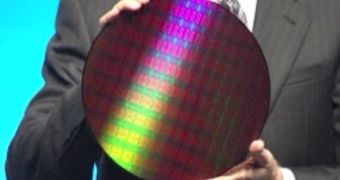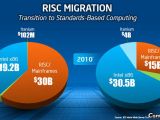Just before this year's Beijing Intel Developers Forum closed its gates, the Santa Clara chip giant held one last keynote which reaffirmed the company's support for the Itanium architecture as well as the Q4 release of the first Xeon E5 processors.
During the presentation, Intel admitted that its Xeon processors have come to catch up, and even surpass, Itanium in terms of reliability and performance, but the company still believes there is a place for this chip in the server world.
This is true especially for customers who need to run HP-UX, OpenVMS, HP NonStop and other mainframe operating systems that have full support for the Itanium architecture.
In addition, although the Itanium market represents only a fragment of the total x86 server shipments, this still accounts for about $4 billion US, which is considerably more than AMD's share of the same market segment.
“The Tukwila product is on the market place now, Poulson will double the performance [of Itanium product line in 2012] and we have the Kittson in development.
“But now Xeon is in the space when there is no workload on the planet that Xeon cannot handle,” said Kirk Skaugen, vice president of the Intel architecture group and general manager of Intel's data center group.
Poulson is Intel's first processor to feature more than 3.1 billion transistors, occupies a die area of 544mm2 and, during the keynote, Intel even presented a wafer that featured the new chips.
In addition to Itanium, Intel also wanted to reassure everyone that all is in order with its upcoming Xeon E5 processors and that these will be available by the end of the year.
The Xeon E5 CPUs are based on the Sandy Bridge EP architecture, feature up to eight processing cores and are targeting multi-socket servers. (via Computer Base)

 14 DAY TRIAL //
14 DAY TRIAL // 
